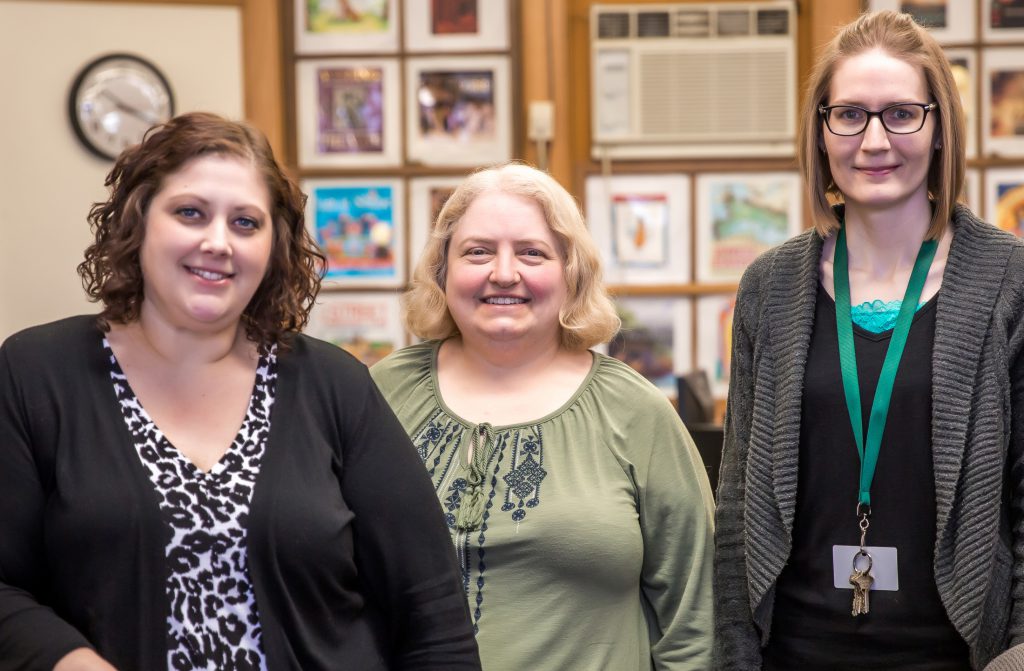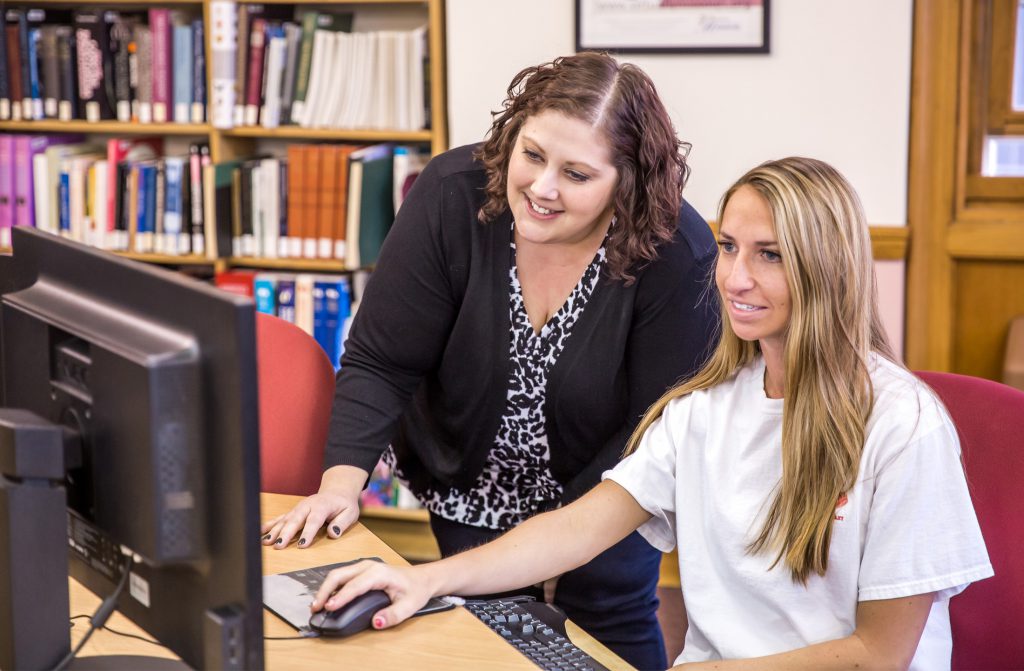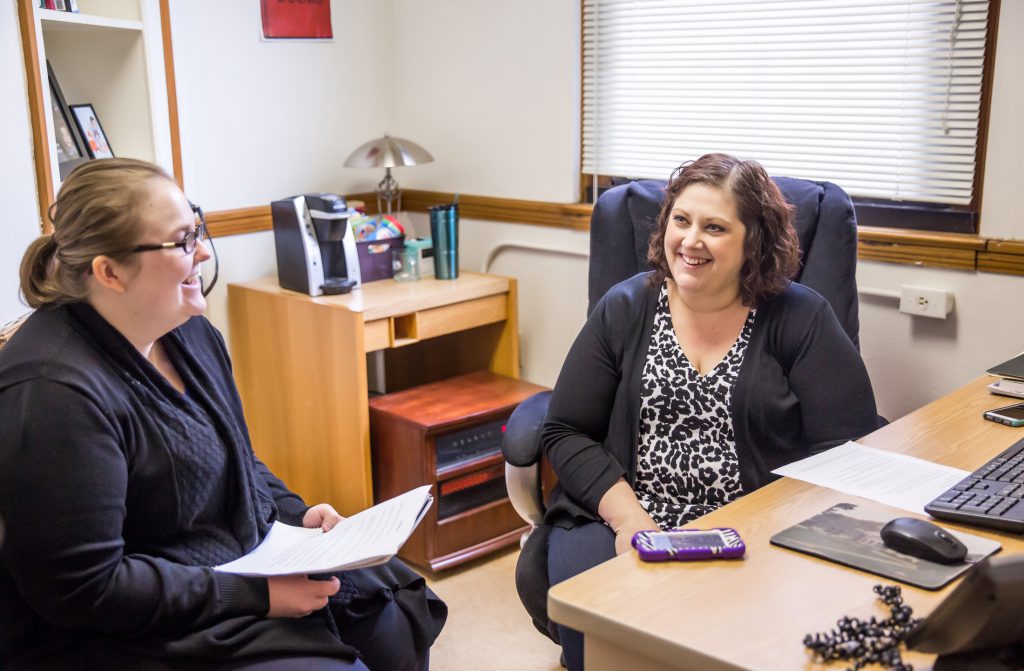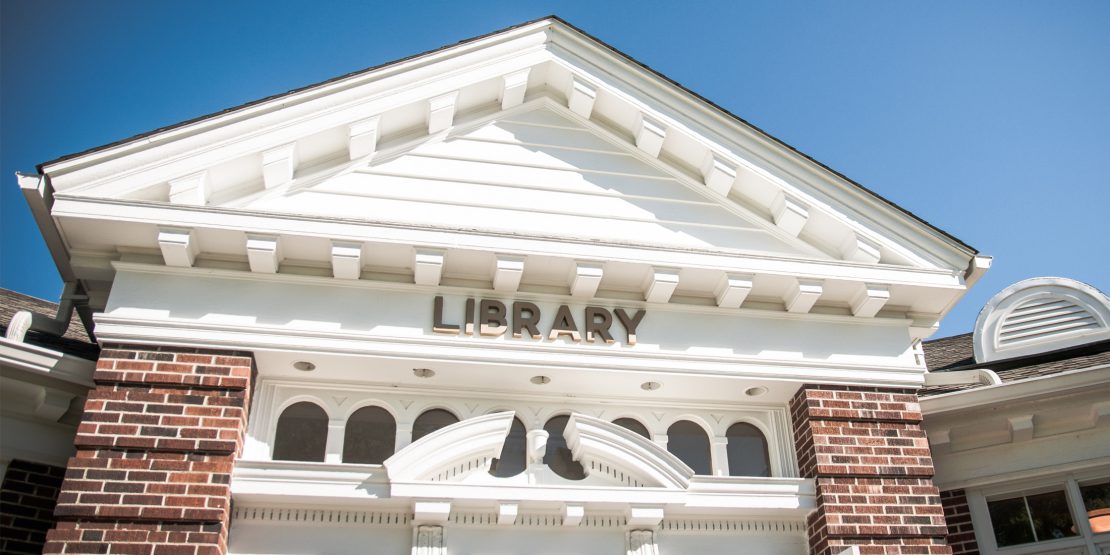The Oxford online dictionary defines the word “library” as “a building or room containing collections of books, periodicals, and sometimes films and recorded music for use or borrowing by the public or members of an institution.” But such a definition is only one chapter in the story of Dulany Library at William Woods University. Dulany offers such a wide range of resources to students beyond the standard library items that, if you haven’t been to Dulany Library lately, then you haven’t really been to Dulany Library.

Facilitated by a staff of highly-qualified librarians who are dedicated to the success of each student, Dulany is The Woods’ one-stop shop of practically endless resources designed to enhance the academic experience. Perhaps the most well-known and utilized of the assets available at Dulany are the computers and printers, which are invaluable to many students for writing and printing papers.
“I come to the library to use the computer 3-4 times per week,” says senior Katie Knobbe. “I like the PCs better than the Macs that are at the Dome.”
“I go to the library do my work-study,” says senior Kassie Cartee. “Other than that, I use the library to print out my papers because I don’t have a printer in my room.”
And as for the standard books and DVDs, the library has those available for checkout, in addition to the following:
- laptops
- iPads
- graphic calculators
- financial calculators
- projectors and screens
- clickers
- phone chargers
- Kindles
- cameras
- graphic tablets
But these various tools, while invaluable to any college student, only partly tell the Dulany Library story. You could, well, write a book about the vast array of additional aids available to the William Woods community that are found at its campus library.
Online Resources

The WWU library subscribes to numerous online research databases for the entire campus community to use.
“There are general databases, such as Academic Search Ultimate, which can be used for any major or topic, as well as subject databases such as Business Source Premier, Education Source, Historical Abstracts or PsycINFO that may be useful for students in a specific class, or in the majors,” said Jill Mahoney, Reference and Information Literacy librarian.
The WWU library also has access to the online video streaming database “Films on Demand” and has access to thousands of eBooks. According to librarian Rachel Utrecht, “As of the January update, we have just over 200,000 titles in the eMO Collection, which is our main eBook collection through MOBIUS and EBSCO.”
“While some students are familiar with library databases and already use them,” said Mahoney, “the librarians feel they could potentially be used by many more students. Many students come in from high school never having used any online research databases and may not be aware that these databases exist and are available for use.”
“Whenever there are research projects or other classroom assignments that are going on, these types of classroom activities always seem to boost student awareness and usage of those resources—especially when the professors work with us to visit the students and help them to find them,” added Utrecht. “That always really helps with having students find where they are and discover how useful they can be towards their academic goals.”
Databases vs Google
Mahoney acknowledges that using the databases for the first time can seem overwhelming if you’re not used to using those types of resources.
“However, if you go to our website we have the ‘Woods One Search’ box,” she said. “Like Google, you can type something in and get a list of results. From there, you can limit the information so it’s more manageable.”
For example, one can limit the search so that only peer reviewed or scholarly resources published are displayed. If one wants a more recent resource, they can limit the sources displayed by selecting a timeframe of dates so that only more recent sources are displayed. According to Mahoney, this ultimately ends up saving students a lot of time.
“With Google you have to spend a lot of time trying to find sources among all those results, and then you have to deal with trying to decide whether or not they’re actually legitimate sources,” she said. “When you use the library databases, you can feel more comfortable knowing the sources you find are probably something that will be safe to use for your class. You’ll probably get better grades too because your professors will see that you’re using credible sources instead of just ‘about.com’ or some other website that isn’t that reliable of a source.”
Additionally, the library databases have a lot of features that aren’t available when using Google. The databases have a button that can be used to create your citation – by clicking on it, it will give you the citation so that you don’t have to format it on your own and can simply copy and paste the citation into your paper.
Mobius
Dulany Library is also a member of MOBIUS, which is a consortium of academic and public libraries that allows the university library to borrow items from other libraries. So if there’s a book that a student needs to write a paper and the library doesn’t have it, the student can request it through the library’s MOBIUS catalog, which can be found on the library’s website. The book usually arrives within a few days and the student simply returns it the library when he or she is finished with it. This service is also completely free for students to use, and students can also utilize this service to access fun things to read as well.
“If we don’t have a new or popular book that just came out that you want to read, you can request it through MOBIUS,” said Mahoney. “I frequently request audiobooks and listen to them in the car.”
Help with Research

In her role as Reference and Information Literacy librarian, Mahoney’s main job is to help people with research. That involves helping students along the whole research process, including creating a research topic and narrowing it to something researchable, searching library databases, evaluating sources, and formatting citations. Students can set up appointments to meet with Mahoney, or she can help through email if schedules conflict or if you are an online student. For students not on campus, she can even record her computer screen and make short demonstration videos so students can see an example of how to search a database.
“I also have an online course on Information Literacy (IFL 115), which teaches students how to do research, as well as how to be a critical consumer of information,” said Mahoney. “If you are interested in being a better researcher and learning how to find and use sources to write better papers, you may be interested in this class which also counts as a Critical Thinking general education requirement.”
If students are uncomfortable asking for help, there are also several research guides that are linked on the library’s website that serve as a “self-help” option to help students get started. However, Mahoney assures that “You can talk to us. We can’t help you unless we know you need help. We consider ourselves to be very service-oriented. We want to do everything we can to help students succeed here. Don’t ever feel like you can’t come talk to anybody that works in the library.”
The Lower-Level
The majority of the library’s books are shelved on the lower-level, where there are also study rooms and a chalkboard. Freshman Allyson Shots says that she spends a lot of time at the library using the computers, “but as a chemistry major, the chalkboard downstairs is really helpful too.” The lower-level study rooms are ideal for group collaboration, but students don’t always have to be quiet in either the upper- or lower-levels. Aside from the Quiet Room on the upper-level, students are allowed to talk and collaborate on group projects without the fear of being scolded.
Finals Week
The library always stays open late during finals weeks, the busy culmination of another semester. On one of the days, the library staff likes to give away snacks. “We try to do fun things like that when students are stressed out,” said Mahoney.
The Value of these Resources
The resources that Dulany Library offers to students are valuable from a financial standpoint, which otherwise would amount to a significant added expense. With access to the databases, students are able to obtain scholarly research and information for free.
“For example, when searching Google for scholarly or peer-reviewed sources, you will often find a journal article and be asked to pay $30 or more to read the full-text,” explained Mahoney. “If you use library databases, you can often access the same article for free. And if we don’t have the article in full-text in our databases, you can request it through Interlibrary Loan. Interlibrary Loan allows us to get materials from another library and is a free service for students.”
In addition to these free online resources, students can also save money by checking out the physical resources that the library has to offer. For example, students can check out a calculator and use it for the whole semester of their classes.
The library’s resources can also help save students some stress too. If a student’s laptop isn’t working and needs to be repaired, they can come check out a laptop from the library for a couple of days while their computer is being fixed.
Not to be outdone is the library’s capacity to offer entertainment value to students who need to relax on weekends. Students are able to check-out projectors and screens if they wish to show a movie or play video games on a big screen, for example.
The conclusion to this story is that the library at The Woods ultimately offers services and resources that are beneficial to students (and faculty) both inside and outside of the classroom. To get the most out of their academic experience, students have an amazing asset in Dulany Library.
| Learn more about Dulany Library resources |

